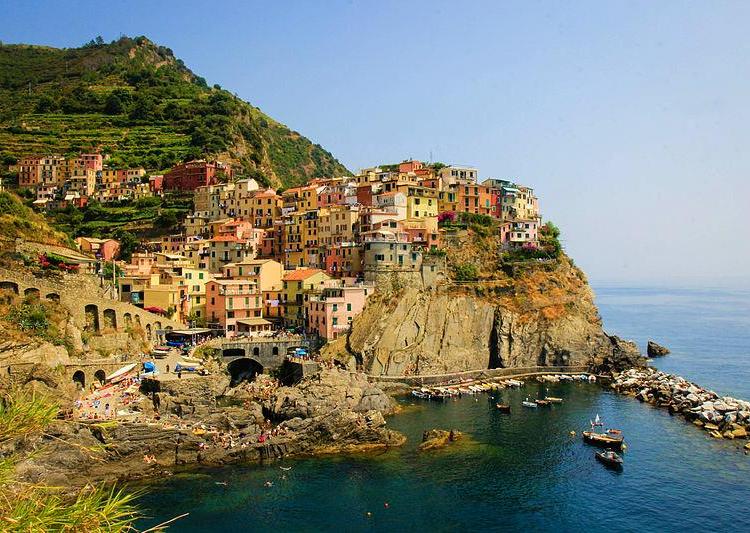These Are The Top Underrated Food Regions Of Italy

Pixabay
Italy is a country that’s deeply in love with its food. To Italians, food is an art form that has been perfected over hundreds and thousands of years. Italians are amazingly scrappy when it comes to their cuisine. When you’re planning your next trip to Italy, look past the more prominent cuisines Tuscany and Sicily offer and dive into these underrated gourmet regions. Your tastebuds will thank you.
Abruzzo
Known as the “greenest region in Europe,” the southern Italian area of Abruzzo has a cuisine that is hugely influenced by the Adriatic Sea. With mountain ranges to the west and the coast to the east, the cuisine of Abruzzo has been protected for centuries from foreign cultural influences. The main dishes of this region are meat-heavy as you move inland and fish-heavy on the coast.
Roasted lamb has a bunch of variations in Abruzzo like arrosticini, thin wooden skewers with pieces of tender lamb that are cooked over an open fire and served with bruschetta. One of the most well-known dishes is sagne e faggioli, a bean soup with thin pasta noodles, tomatoes, garlic, olive oil and spicy pepper. Ravioli stuffed with sugar and cinnamon and served with a pork ragu is one of the region’s most prominent. You’ll find rustic tarts, nutmeg-seasoned sausage spreads and gnocchi dishes with bacon, eggs and Pecorino cheese.
Calabria
At the toe of Italy’s “boot” is a picturesque region called Calabria. Calabrian cooking combines the best of meat and vegetable dishes, especially eggplant and fish with fragrant mountain herbs. There’s a big emphasis on preserving foods here because of the dryness of the inland mountains, which have proved tough for growing crops. The people of this region combat this by packing vegetables and meats in oil with spices and curing meats and fish.
Calabria is famous for its ‘nduja, a spicy spreadable salami that’s blended with local chili peppers. It’s great for crusty rustic breads and pasta dishes. Calabria’s cipolla rossa di Tropea — the region’s sweet, bold purple onion — is used for everything from salads to pasta dishes to pizzas. Cucina povera, also known as peasant cuisine, is simple and flavorful with dishes like wide noodles with chickpeas, garlic and oil. Licorice is pretty big in addition to sweet and salty sardines, eggplant stews and fried honey balls known as struffoli.
Lombardy
The region of northern Italy with Milan at its capital is called Lombardy. This cuisine spans across Milan, Mantova, Bergamo, Brescia and Cremona. Since rice and corn are cultivated pretty extensively in northern Italy, there’s a ton of risotto and polenta. You’ll come across the saffron-hued risotto alla milanese and panettone, a dome-shaped bread that’s soft and airy inside and contains citron, candied orange, lemon zest and raisins.
In Mantova, you’ll find tortelli di zucca, which is ravioli stuffed with pumpkin, Parmigiano cheese, mostarda, nutmeg and amaretti. In Bergamo, there’s polenta e uccelli, made with toma and fontina cheeses, melted butter, Parmigiano and open-flame roasted birds like quail or sparrow. YIKES. Bergamo is also the producer of the soft and creamy Taleggio cheese. Cremona is associated with torrone, the Italian holiday nougat made with egg whites, honey, sugar, toasted almonds and hazelnuts.
Liguria
The Italian region of Ligura is home to Cinque Terra, Portofino and Genoa. This is where you’ll discover the best pesto Genovese, minestrone and fresh focaccia in the country. With its coastal location, seafood and fish are a big part of the diet here. The mineral-rich soil makes for the best basil, rosemary, wine, olive oil, porcini mushrooms and pine nuts. Basically, this where all of your pesto dreams come true. There’s farinata, a Ligurian street food made from chickpea flour, that’s similar to focaccia and topped with anything from olive oil and salt to cheese or meat.
This region is known for its tender and crunchy artichokes, which pop up throughout the cuisine in everything from pies to sauces. When you’re traveling around Liguria you’ll need to try Ciuppin, a seafood or fish soup made on the Gulf of Tigullio. It’s traditionally made by fishermen with the catch of the day along with onion, carrot, celery, garlic, white wine, tomatoes and parsley. Sometimes you’ll find saffron, nutmeg and anchovy added. Ciuppin is slow-cooked for up to two hours before it reaches your plate. Take advantage of all of the seafood when you’re in this area.
Aosta Valley
Valle d’Aosta or The Aosta Valley is known as the smallest region in Italy with a completely unique range of dishes. Nestled between France and Switzerland, the mountainous region has Swiss, French and Piedmont influences. Unlike the rest of Italy, pasta is not a staple in the Aosta Valley. The cuisine is based on hearty foods like comforting soups, heavy rye breads, polenta, rice, gnocchi and potatoes.
There’s a dish called minestra di castagne e riso, that’s made by simmering rice and chestnuts in milk until it becomes a thick porridge. Risotto alla valdostana is made with fontina cheese, butter, Parmigiano Reggiano and rice. Seupa à la valpelenentse is made by simmering cabbage, fontina cheese, ham and rye bread in beef broth with salt pork, spices and herbs. Locally-grown apples and pears are extra sweet in this region and cooked with red wine for certain desserts. Local honey here is used to bake tegole cookies. While the Aosta Valley may be tiny, the cuisine might be the heartiest you’ll find.











